
Ornithologist 🐦 Ethologist 🦉 Ph.D. in Cognitive Ethology 🦅 Avian Cognition 🐦⬛ Predator-Prey Interactions 🦤 Predator Recognition🦜
https://www.researchgate.net/profile/Ondrej-Fiser-2?ev=hdr_xprf
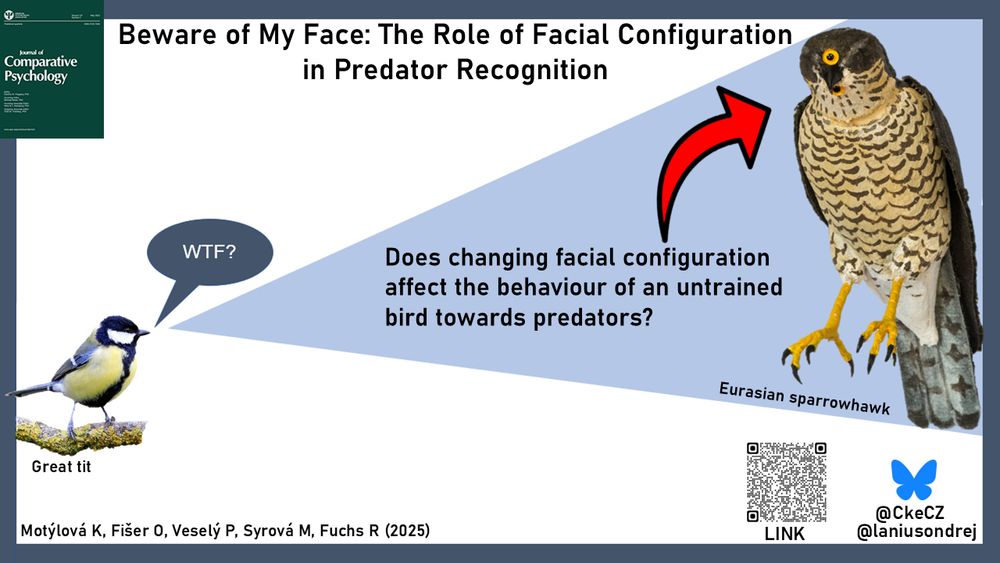
We tested if wild #GreatTits recognise predators not just by what facial elements are present (eyes, beak), but also how they’re arranged.
👁️🔄 Rotate the eyes 90° = more fear
👁️↩️ Rotate them 180° = same fear
👁️🚫 No eyes/beak = no fear
#BirdCognition 🐦🪶🧪 #JCOMP
Common Ringed Plover (Charadrius hiaticula) is able to adjust the nest defense to perceived risk
link.springer.com/article/10.1...
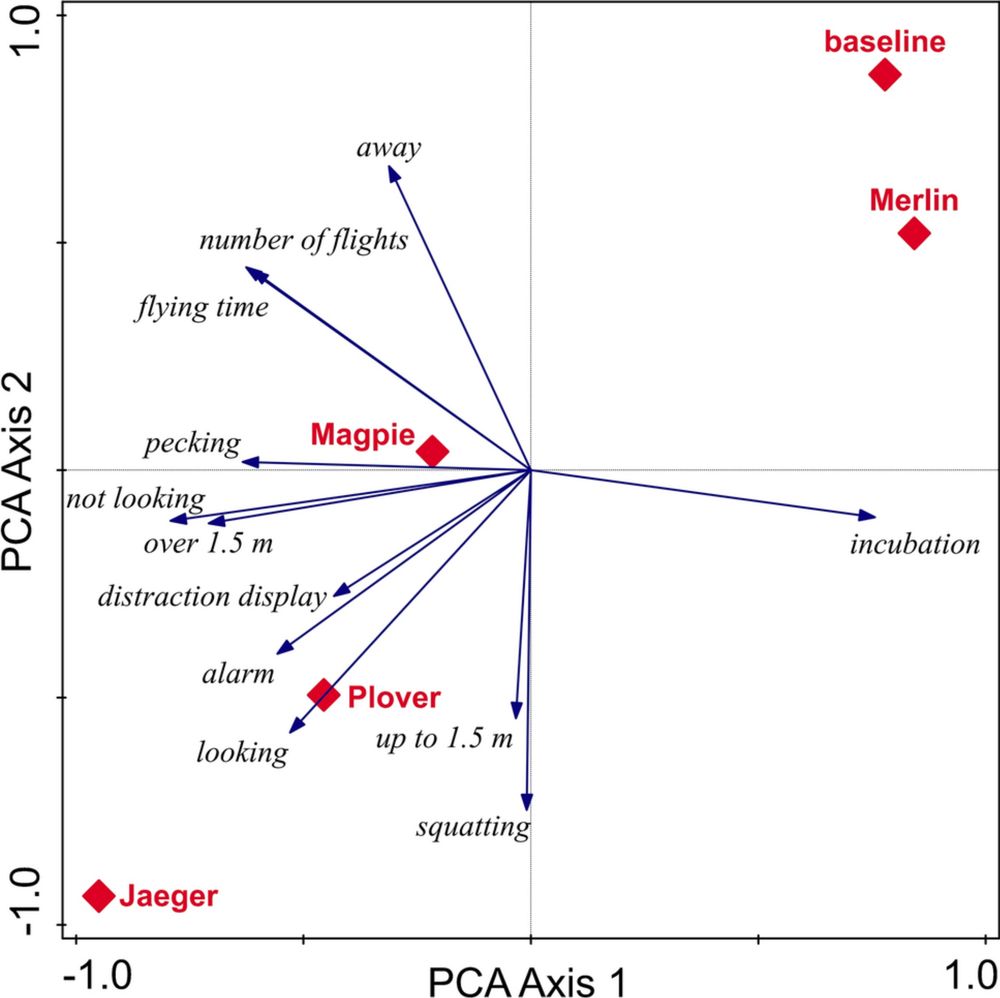
Common Ringed Plover (Charadrius hiaticula) is able to adjust the nest defense to perceived risk
link.springer.com/article/10.1...
First evidence that emotions are contagious in insects too.
Bumblebees that observed an optimistic bumblebee became optimistic themselves.
This is the most basic form of empathy.
(paper) www.science.org/doi/10.1126/...

First evidence that emotions are contagious in insects too.
Bumblebees that observed an optimistic bumblebee became optimistic themselves.
This is the most basic form of empathy.
(paper) www.science.org/doi/10.1126/...

They studied 21 species from nine families that were separated by 50 million years of evolution. Perhaps the most interesting finding: the alarm call is learned.
(paper) www.nature.com/articles/s41...


They studied 21 species from nine families that were separated by 50 million years of evolution. Perhaps the most interesting finding: the alarm call is learned.
(paper) www.nature.com/articles/s41...
Specialised diets and migration are associated with greater fear of new objects. Surprisingly, witnessing such objects in groups is also associated with greater fear.
(paper) journals.plos.org/plosbiology/...
(blog) phys.org/news/2025-10...


Specialised diets and migration are associated with greater fear of new objects. Surprisingly, witnessing such objects in groups is also associated with greater fear.
(paper) journals.plos.org/plosbiology/...
(blog) phys.org/news/2025-10...
Leading this big team science project, with our excellent core leadership team, is a labour of love for me, delighted to see our hard work over the past 4 years has reached this milestone!
“A large-scale study across the avian clade identifies ecological drivers of neophobia.”
Led by the #ManyBirds Project - 129 researchers, 82 institutions, 24 countries 🌍
🔗 journals.plos.org/plosbiology/...
@themanybirds.bsky.social

Leading this big team science project, with our excellent core leadership team, is a labour of love for me, delighted to see our hard work over the past 4 years has reached this milestone!
“A large-scale study across the avian clade identifies ecological drivers of neophobia.”
Led by the #ManyBirds Project - 129 researchers, 82 institutions, 24 countries 🌍
🔗 journals.plos.org/plosbiology/...
@themanybirds.bsky.social

👉 Tak si uložte 26. 9. v 19:15 na Přírodovědecké fakultě UK. 👈
👀 A s kým se uvidíte? ⬇️

👉 Tak si uložte 26. 9. v 19:15 na Přírodovědecké fakultě UK. 👈
👀 A s kým se uvidíte? ⬇️
Leo, a 21-year-old rook, began following verbal instructions spontaneously during comparative cognition experiments. He has been tested for this ability, and did great.
(paper) link.springer.com/article/10.1...
Leo, a 21-year-old rook, began following verbal instructions spontaneously during comparative cognition experiments. He has been tested for this ability, and did great.
(paper) link.springer.com/article/10.1...

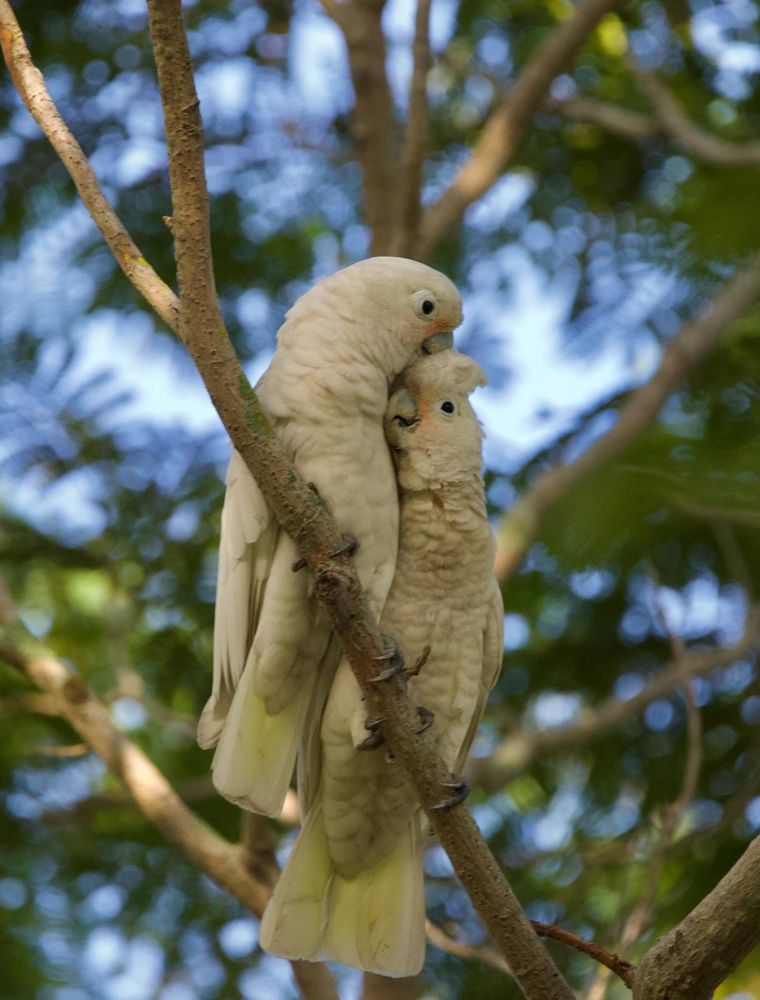


After years of research, fieldwork, writing, and countless discussions, I successfully defended my dissertation on predator recognition in birds.
I couldn’t have done this without the support of my colleagues, mentors, friends, family and birds. Thank you! 🦅🙏



After years of research, fieldwork, writing, and countless discussions, I successfully defended my dissertation on predator recognition in birds.
I couldn’t have done this without the support of my colleagues, mentors, friends, family and birds. Thank you! 🦅🙏

Learn more: https://scim.ag/3Uz7vzP

Learn more: https://scim.ag/3Uz7vzP

#neuroskyence 🧪

#neuroskyence 🧪
royalsocietypublishing.org/doi/10.1098/...

royalsocietypublishing.org/doi/10.1098/...
@mandyridley.bsky.social
doi.org/10.1093/behe...

@mandyridley.bsky.social
doi.org/10.1093/behe...
www.youtube.com/watch?v=yfEp...

www.youtube.com/watch?v=yfEp...
Behavior, neurobiology & field studies across avian species
Very fond of the neurobiology part :)
📖 Read it here: rdcu.be/eyErI
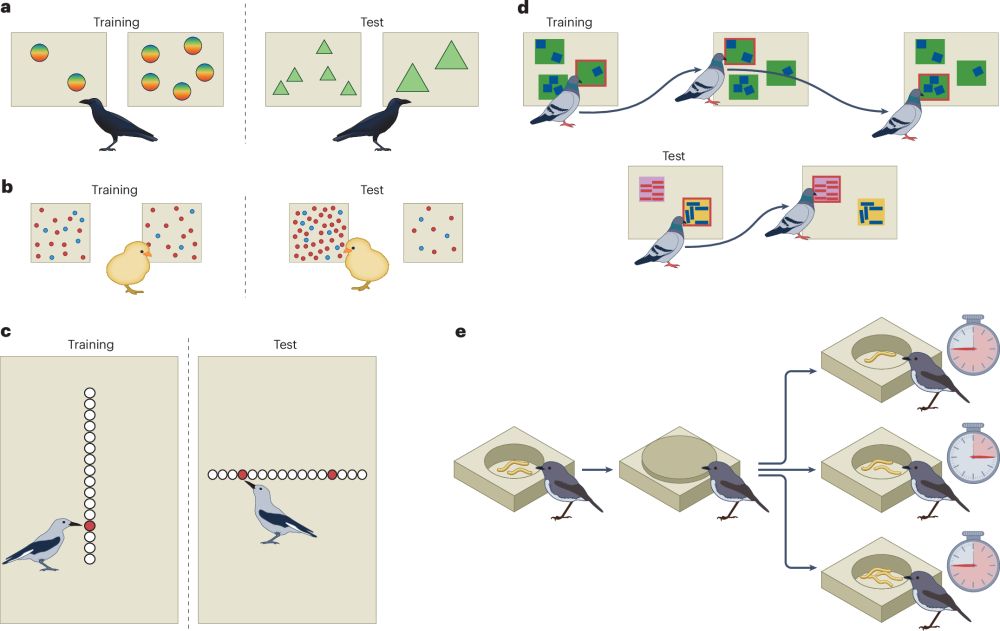
Behavior, neurobiology & field studies across avian species
Very fond of the neurobiology part :)
📖 Read it here: rdcu.be/eyErI
We reveal that initiating movements—especially when attempting to initiate against a majority and when there is directional conflict—drives elevated heart rates in vulturine guineafowl
www.sciencedirect.com/science/arti...
@currentbiology.bsky.social
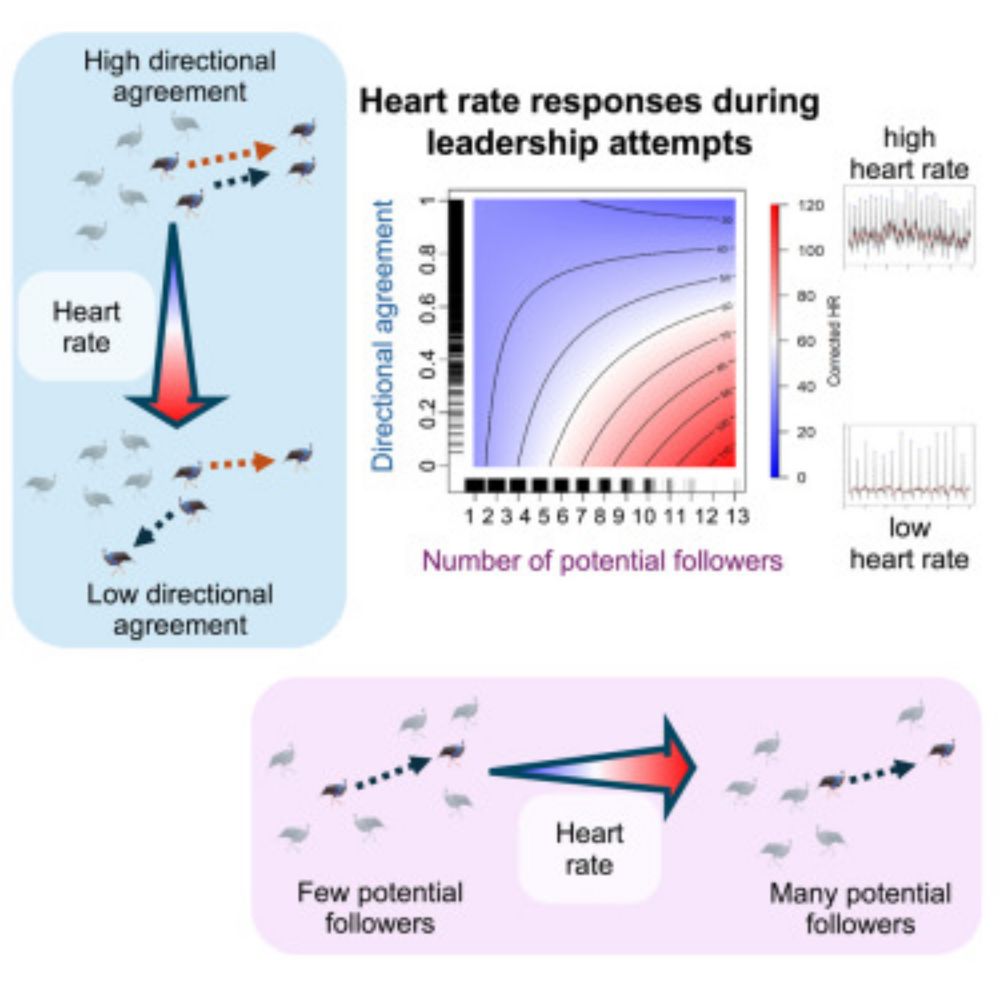
We reveal that initiating movements—especially when attempting to initiate against a majority and when there is directional conflict—drives elevated heart rates in vulturine guineafowl
www.sciencedirect.com/science/arti...
@currentbiology.bsky.social
They have been recorded (Salish Sea) using kelp, cutting it (technically the first documentation of toolmaking in cetaceans) and using it to groom others.
(paper) www.cell.com/current-biol...
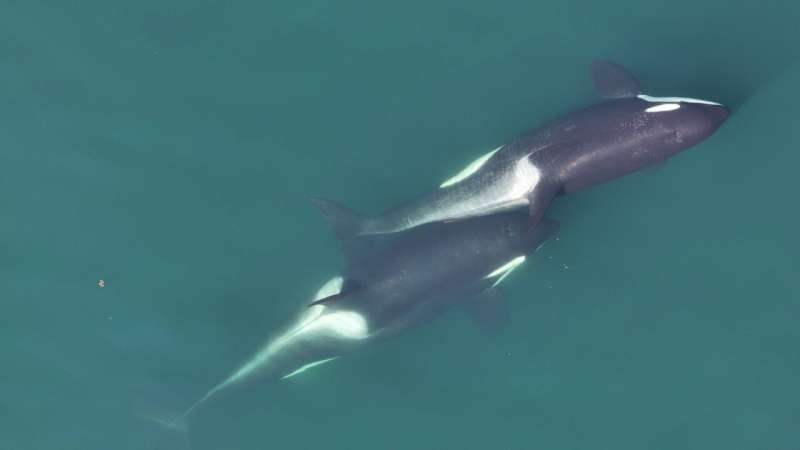
They have been recorded (Salish Sea) using kelp, cutting it (technically the first documentation of toolmaking in cetaceans) and using it to groom others.
(paper) www.cell.com/current-biol...
Pinyon jays (Gymnorhinus cyanocephalus) and Clark’s nutcrackers (Nucifraga columbiana) can discriminate between pilfering and non-pilfering conspecifics, but not between heterospecifics link.springer.com/article/10.1...
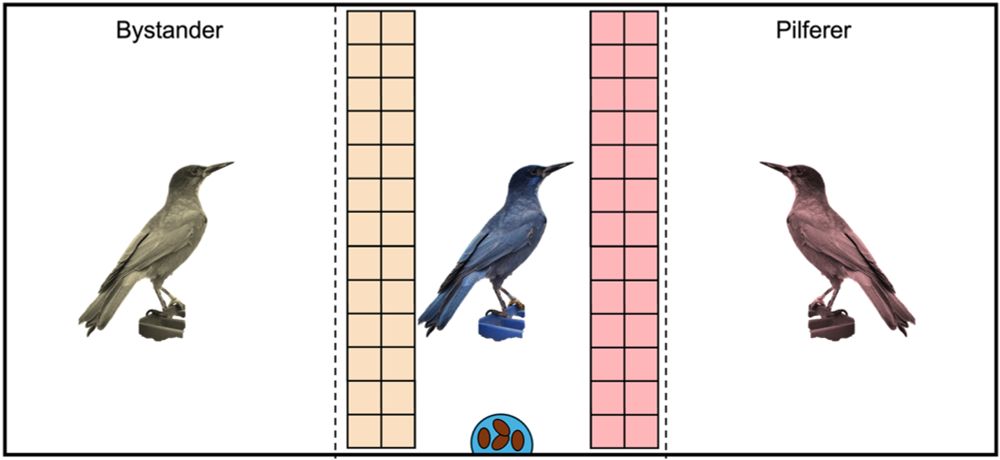
Pinyon jays (Gymnorhinus cyanocephalus) and Clark’s nutcrackers (Nucifraga columbiana) can discriminate between pilfering and non-pilfering conspecifics, but not between heterospecifics link.springer.com/article/10.1...
➡️ vist.ly/3n99bk6
#ornithology #birds #same-sexbehaviour #review #partnershipshref="https://bsky.app/profile/did:plc:hegstn3ytohj2itc65ujj63a" class="hover:underline text-blue-600 dark:text-sky-400 no-card-link" target="_blank" rel="noopener" data-link="bsky-mention">ips <a href="https://bsky.app/profile/did:plc:hegstn3ytohj2itc65ujj63a" class="hover:underline text-blue-600 dark:text-sky-400 no-card-link" target="_blank" rel="noopener" data-link="bsky-mention">@tashgillies.bsky.soc<a href="https://bsky.app/profile/did:plc:mrn7apalemi74zfpvwak6lrw" class="hover:underline text-blue-600 dark:text-sky-400 no-card-link" target="_blank" rel="noopener" data-link="bsky-mention">ial <a href="https://bsky.app/profile/did:plc:mrn7apalemi74zfpvwak6lrw" class="hover:underline text-blue-600 dark:text-sky-400 no-card-link" target="_blank" rel="noopener" data-link="bsky-mention">@katrina-siddiqi.bsky.social
Illustration: <a href="https://bsky.app/profile/did:plc:ukgm5wuiaqf7guxw555p5fuq" class="hover:underline text-blue-600 dark:text-sky-400 no-card-link" target="_blank" rel="noopener" data-link="bsky-mention">@bertillemohring.bsky.social
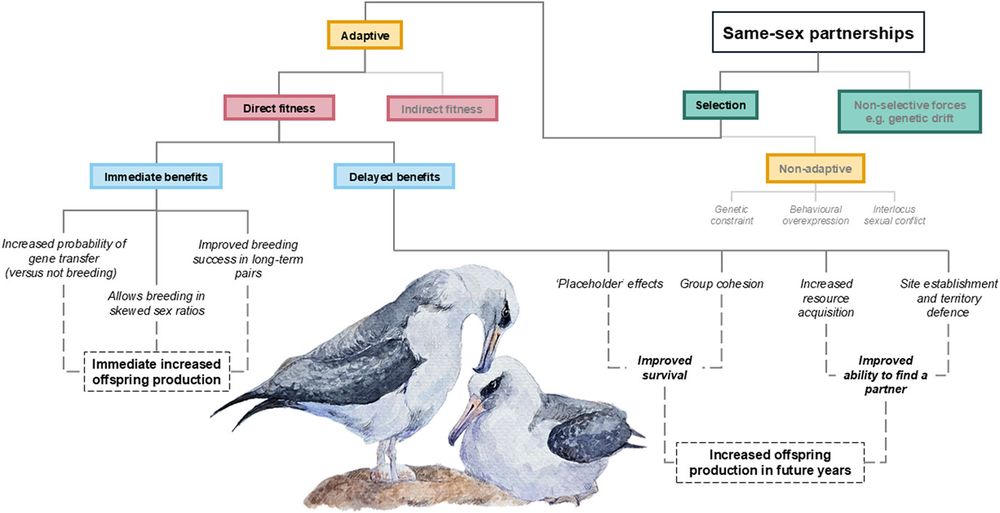
➡️ vist.ly/3n99bk6
#ornithology #birds #same-sexbehaviour #review #partnershipshref="https://bsky.app/profile/did:plc:hegstn3ytohj2itc65ujj63a" class="hover:underline text-blue-600 dark:text-sky-400 no-card-link" target="_blank" rel="noopener" data-link="bsky-mention">ips <a href="https://bsky.app/profile/did:plc:hegstn3ytohj2itc65ujj63a" class="hover:underline text-blue-600 dark:text-sky-400 no-card-link" target="_blank" rel="noopener" data-link="bsky-mention">@tashgillies.bsky.soc<a href="https://bsky.app/profile/did:plc:mrn7apalemi74zfpvwak6lrw" class="hover:underline text-blue-600 dark:text-sky-400 no-card-link" target="_blank" rel="noopener" data-link="bsky-mention">ial <a href="https://bsky.app/profile/did:plc:mrn7apalemi74zfpvwak6lrw" class="hover:underline text-blue-600 dark:text-sky-400 no-card-link" target="_blank" rel="noopener" data-link="bsky-mention">@katrina-siddiqi.bsky.social
Illustration: <a href="https://bsky.app/profile/did:plc:ukgm5wuiaqf7guxw555p5fuq" class="hover:underline text-blue-600 dark:text-sky-400 no-card-link" target="_blank" rel="noopener" data-link="bsky-mention">@bertillemohring.bsky.social
They used a motion capture system to study this. The probability of them paying attention to an object increases with the number of pigeons already looking at it. It is linear, with no quorum or limit
(paper) www.cell.com/iscience/ful...


They used a motion capture system to study this. The probability of them paying attention to an object increases with the number of pigeons already looking at it. It is linear, with no quorum or limit
(paper) www.cell.com/iscience/ful...

